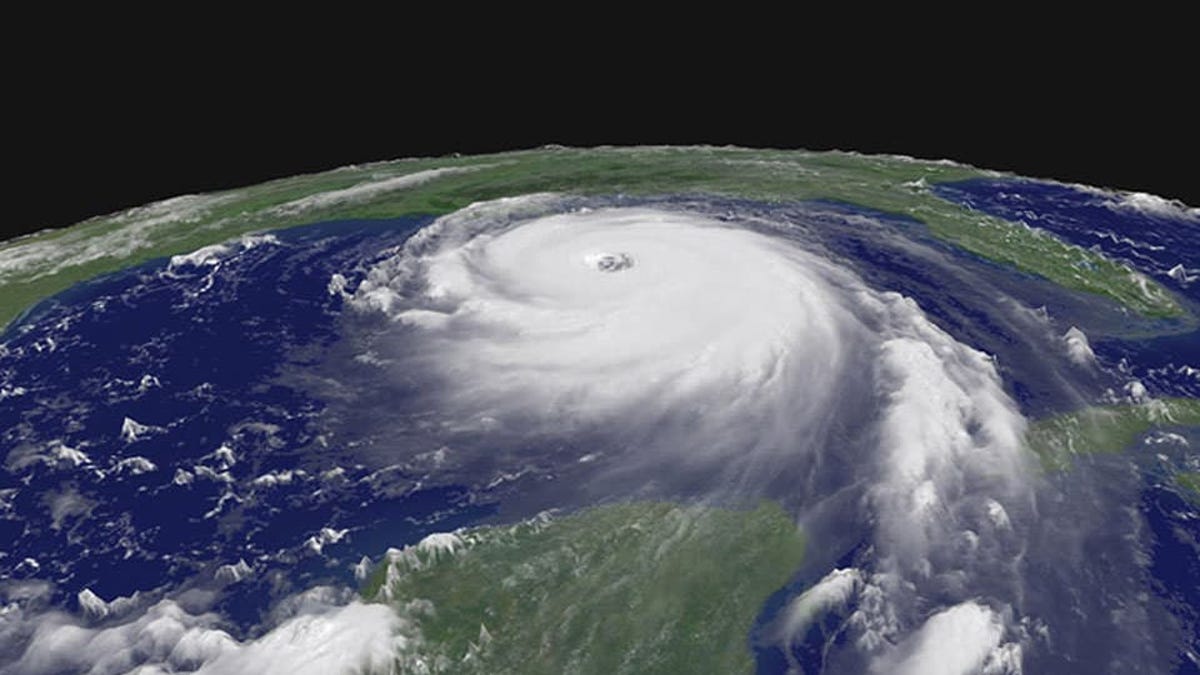Climate Change Making Hurricane Rainfall More Extreme and Destructive
New research finds humans have made tropical cyclones in the Atlantic wetter and more dangerous.

A satellite view of Hurricane Katrina in the Gulf of Mexico in 2005.
For decades, the intensity of Atlantic hurricanes has been gauged primarily by their wind speeds, but over the past 20 years or so extreme rainfall accompanying tropical storms has done historic damage. New research adds to the mounting evidence that human-caused climate change is already making things even worse.
The 2020 Atlantic hurricane season was the most active on record, with 30 named storms and 11 of those making landfall. A study published in the most recent issue of Nature Communications finds that anthropogenic climate change (change defined by humans' impact) increased hourly rainfall amounts during the season by up to 10%.
"Human activities continue to increase the amount of greenhouse gases in the atmosphere, resulting in an increase of more than 1 degree Celsius in the global average surface temperature in 2020 compared to 1850," reads the report summary.
Global warming has also increased sea surface temperatures in the North Atlantic. Warmer oceans tend to allow tropical storms to pick up more moisture, which can then later be dropped on land in the form of record amounts of rainfall. One of the most extreme examples of this was seen in the case of Hurricane Harvey, which dumped nearly 5 feet (1.5 meters) of rain on parts of the Houston area in August 2017.
The relatively new science of climate attribution allows researchers to model how certain weather events, including hurricanes and extreme rainfall, might have played out under pre-industrial climate conditions. The results are then compared with the actual events to infer the role climate change played in exacerbating impacts.
In this case, Kevin Reed of Stony Brook University and colleagues found that different ways of measuring the rainfall during the 2020 season increased by between 5% and 10%. When only hurricane-strength storms are included, the increase is between 8% and 11%.
"This work suggests that this warming will lead to yet further increases in North Atlantic hurricane season extreme rainfall rates and accumulated amounts," they write in the study's conclusion.
Early forecasts for the upcoming 2022 Atlantic hurricane season, which officially begins on June 1, are calling for another year of above-average activity.

